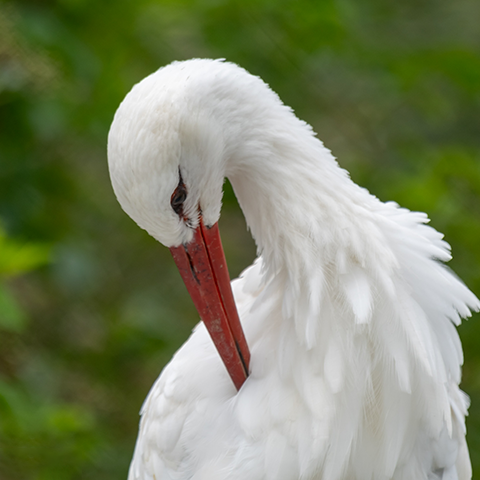
White Stork
Historically found throughout Europe, the white stork suffered declines around the Second World War. However it has started to recover in France, Switzerland and Italy. These are migratory birds that spend the summer in Europe migrating to south of the Sahara.

Habitat
Although these birds will breed in towns and villages, typically on rooftops, their natural habitat is wet meadows, marshland and pond areas.
Our Storks
White storks are listed by IUCN as least concern. This is partly due to their large distribution but like Choughs' and Scottish Wildcats there is a project working to bring them back to the wild in the south of England. This project is called the White Stork project.Our storks are part of the project although they have not bred yet. Hopefully they will successfully breed this year.
factfile
- These birds rarely eat fish in the wild.
- When pairs are re-established after their long migration, they greet one another by throwing their heads back and clattering their beaks together.
- White storks pair for life.
- Stork’s nests are commonly found on the rooftops of villages in Germany.
White storks are large birds with a white head and black tips to the wings. The legs and bill are red. Young storks have black legs and bills until their first autumn.

